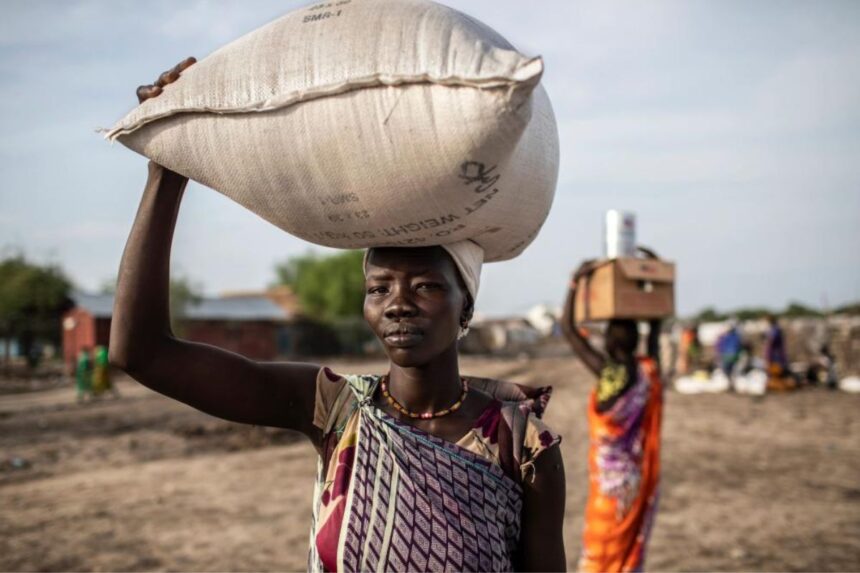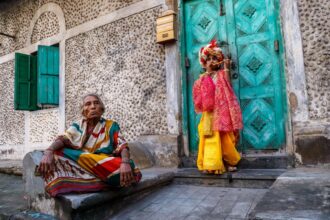What drives two young backpackers to travel through a corner of the world deemed dangerous in Western descriptions? What makes one gamble with their safety? According to Tunasafiri Studio’s upcoming film An East African Circle, it’s the fact these Western descriptions should be reconsidered.
In the 90-second long trailer that Tunasafiri Studios released today we catch glimpses of the hills of Kigali, landscapes of Uganda, coast of Mombasa
Veerle Koops
… and we see two teenagers who seem to enjoy sleeping on couches and carrying heavy backpacks. The trailer claims that East Africa is a victim of generalizations, stereotyping and harmful prejudice. Meanwhile, it features the difficulties that are encountered by two young females traveling without male companionship.
Unmasking East Africa: A Journey Beyond Prejudice and Luxury
Veerle Koops and Roos Postema are two Dutch international students. When they embarked on their journey, they were attending United World College East Africa – located in Arusha, Tanzania. In the first year of their studies, they found that their preconceived Western perceptions of “Africa” diverged from the complex and rich reality of northern Tanzania. Their newfound insights drove An East African Circle forward; and now they are presenting the film to the world.
Tourism in East Africa is often limited to mzungu safari’s and high-budget lodges. An appropriate contrast to this is provided by the local modes of transport that are featured in the film; daladala and matatu, piki piki and moto; and even the famous SGR train between Nairobi and Mombasa. Throughout the film we see that this indeed is a fashion of travel that does not offer luxury to the passenger. There are scenes of overcrowded depots, filled buses, uncomfortable boats, and most importantly the requirement to watch out for pickpockets. However, it remains strange that these ways of transportation are only used by locals, and tourists uniformly stick to taxis and tour guides. Are these different modes of transport caused by foreign tourists preferring comfort over bargain – or could this perhaps be the result of unjust prejudice about the “dangers” of this type of commute?
Beyond the Stereotypes: An Unfiltered Glimpse into East Africa’s Reality
Underdeveloped, dangerous, and no water; young children without proper clothes; middle aged men with rifles and machetes; and old people that are only capable of begging for money at the side of the road. If you’ve ever been presented with this one-dimensional and biased perception of East Africa, we encourage you to watch An East African Circle when it releases on the 15th of October. ‘Our organization stands for equality between people’ says Koops. ‘And that is why today we contribute to equal media coverage of the good and the bad: of the truth, and not of a Westernly nurtured and inferiorly presented East Africa.’
‘The first thing we did was simple: we traveled.’ Postema tells us. ‘We decided on a route that would guide us around Lake Victoria: we visited Mwanza, Kigali, Kampala and Jinja, before we went inlands to Kenya where we visited Nairobi, Nanyuki, Mombasa and a small village named Umoja’. Umoja village is a community in central Kenya that consists of only women and their children. These women have all been cast away from their own families due to pregnancy before marriage and other such cultural conflicts. ‘On the long road back to Nanyuki the water truck we were hitchhiking with was repeatedly stopped for passport checks. When we asked the driver why we were halted by the military several times, he told us that this route was allegedly used for human trafficking.
Challenging Narratives: An Authentic Expedition through East Africa’s Diverse Landscapes
Finally after two weeks of traveling, we met the “dangers” we were warned about, in the outskirts of Kenya. Even though we recognize the risks, we want our audience to understand that this is not the norm in East Africa’.
After 30 days of travel, Koops and Postema realized how tired they were when they sat across from each other on the shore of Wasini Island. Packing up their backpacks, they decided to return to Arusha the same day – which sounds easier than it was. Taking the ferry, a piki piki, daladala, tuktuk, train and taxi (in that order), the next morning at dawn Koops and Postema arrived at Nairobi’s central bus station. Here, disaster struck for a last time. With Postema already seated in the back of the next bus, the driver of the previous taxi was overcharging just when the backpackers ran out of Kenyan Shillings. This resulted in the following scene: Nairobi in the near dark, five tall Kenyan men, and Koops arguing in broken Swahili about the price of the taxi.
The month of travel was peppered with stressful moments such as this: moments that are especially intimidating for women. In An East African Circle, the ideal to break stereotypes is subtext, not text. Where the presentation of a Westernly unconventional image is the driving force behind the film, it is communicated through a combination of cleverly-edited footage, contextual and interpretive analysis, and the film’s interaction with its audience through thought provoking content.
‘We are extremely conscious of the fact that we are Western-European guests in East Africa’, says Koops. ‘We do not want there to be any misunderstanding about the fact that we do not and cannot claim to represent the East African people, cultures and countries. We want to offer this film as an invitation to question whether the views that you are presented with are biased, and to rethink the characteristics that societies have assigned to different parts of the world. Breathtaking recklessness, shy mountains and the sweetness of getting lost: every adventure is a testament to the worthiness of the gamble.’.


















